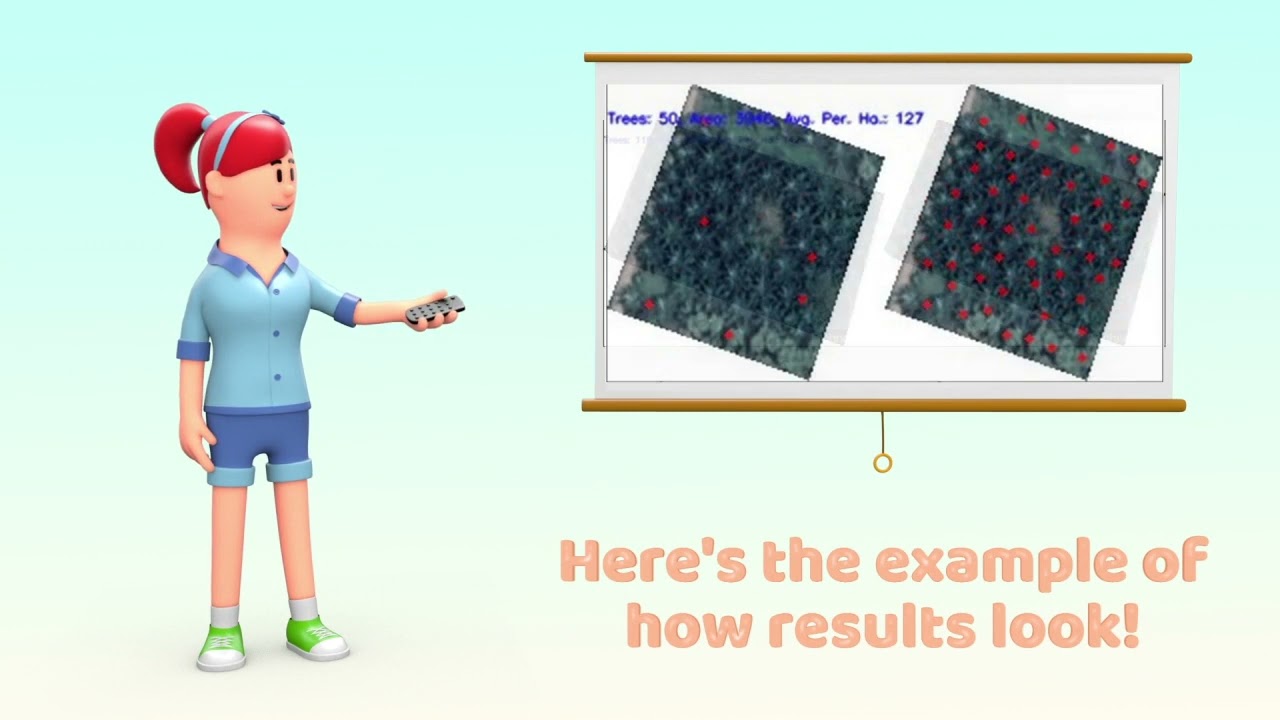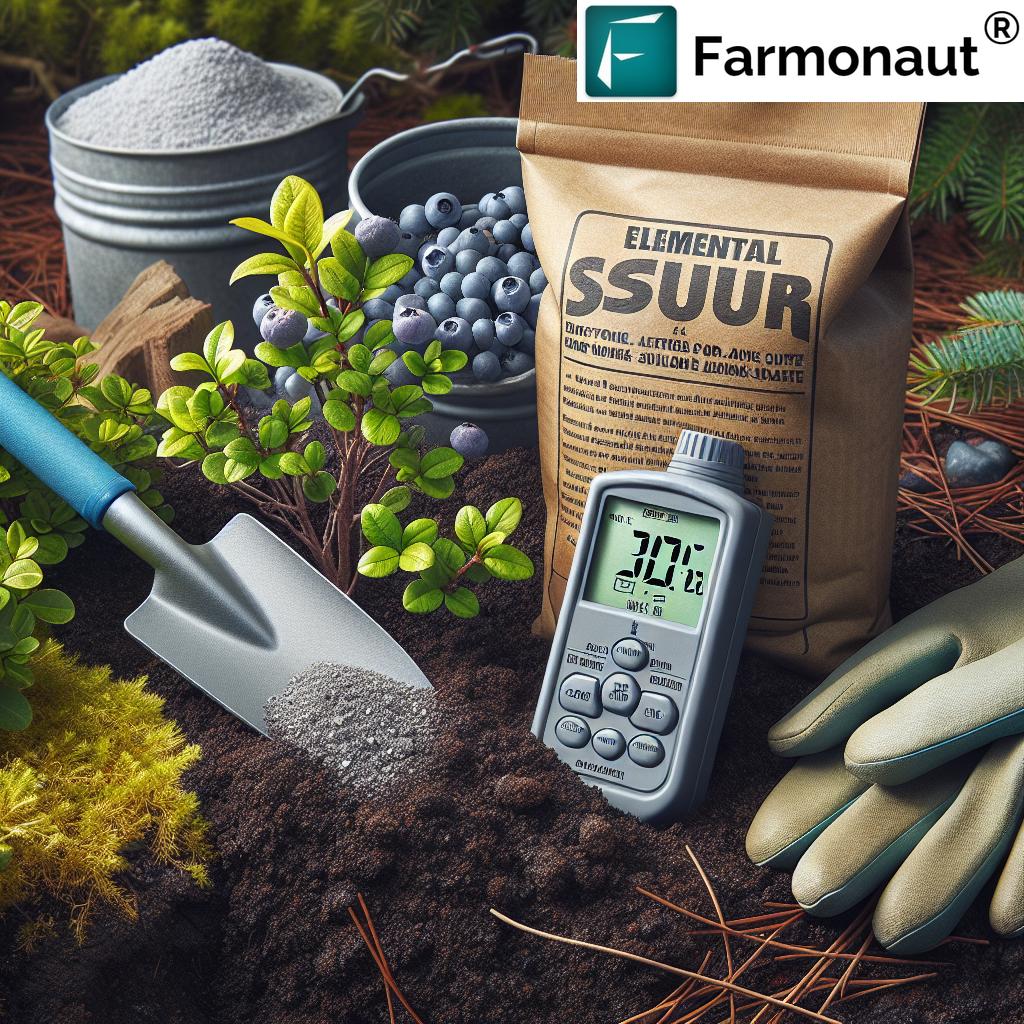Queen Bee Honey & Beekeeping Queen Bee: Boost 2026 Yields
The Critical Role of Queen Bees in Sustainable Beekeeping and Agriculture in 2025
“A single queen bee can lay up to 2,000 eggs per day, crucial for boosting hive population and 2026 crop yields.”
Table of Contents
- Introduction: Queen Bee Honey and Beekeeping Queen Bee in Modern Agriculture
- The Significance of the Queen Bee in Beekeeping and Agriculture
- Queen Bee Honey: Nature’s Golden Asset for Sustainability
- Buying and Selecting Quality Queen Bees in 2025 & 2026
- Advances in Beekeeping Queen Bee Management
- Queen Palm Tree: Integrating Palms into Agricultural Ecosystems
- Farmonaut: Driving Agricultural Sustainability With Satellite Insights
- Comparative Benefits Table: Queen Bee Honey and Yield Impact
- Conclusion: A Future Built on Queen Bee-Led Sustainability
- FAQ: Queen Bee Honey, Beekeeping Queen, and Agriculture (2026)
Introduction: Queen Bee Honey & Beekeeping Queen Bee in Modern Agriculture
Queen bee honey, the beekeeping queen bee, and agroforestry staples like the queen palm tree are central to the future of sustainable agriculture, food security, and environmental resilience as we move into 2026 and beyond. Never before have these elements played such an indispensable role in agricultural productivity, ecosystem health, and the livelihoods of farmers worldwide.
In this blog, we uncover the interconnected roles of queen bees, queen bee honey, and queen palm trees. From advances in beekeeping queen selection to integrating palms for diversified agro-ecosystems, our journey covers the strategies, technological innovations, and management practices ensuring healthy bee colonies, robust crop yields, and long-term sustainability.
The Significance of the Queen Bee in Beekeeping and Agriculture
The queen bee stands at the center of every honey bee colony. As the sole egg-laying nucleus of the hive, she is responsible for laying up to 2,000 eggs daily during active seasons—a feat unmatched by any other member of the colony. This high reproduction rate is the backbone of thriving colonies and thus of the entire bee workforce needed for foraging, hive care, and crop pollination.
With more than 75% of major food crops benefiting directly from bee pollination, the queen’s health and productivity determine the colony’s size and vigor. Crops like almonds, apples, blueberries, cucumbers, watermelons, and many others rely on animal pollinators for improved fruit set and quality. Ensuring a healthy queen with the genetics for disease resistance, adaptability, and reproductive strength is crucial for increasing yields, maintaining crop security, and promoting biodiversity across farming systems.
How the Queen Bee Affects Colony and Crop Productivity
- Egg-Laying Capacity: A robust queen bee lays thousands of eggs throughout the active season, replenishing the worker population necessary for efficient foraging and hive maintenance.
- Colony Stability: The queen’s pheromones regulate worker behaviors and maintain colony cohesion. A weakened or lost queen can spiral the colony into disarray and eventual collapse.
- Genetic Diversity: A queen fertilized by multiple drones brings genetic variation, improving disease resistance and adaptability to environmental stresses like climate variability.
- Pollination Services: Healthy colonies, led by a vigorous queen, deploy stronger foraging forces, boosting crop pollination rates, which directly translates to higher production and better food quality.
The importance of the queen bee in beekeeping, crop management, and ecological health has never been more pronounced, especially as ongoing challenges like Varroa mites, colony collapse disorder, and erratic weather threaten bee populations and crop output globally.
Focus Keyword: Queen Bee Honey
Queen bee honey’s critical role extends beyond nutrition. The presence of strong, genetically robust queens ensures steady honey production, pollination, and overall colony vitality—crucial factors for sustainable crop yields and food security through 2026.
Queen Bee Honey: Nature’s Golden Asset for Sustainability
Queen bee honey is more than a nutritious sweetener—it’s a byproduct of effective beekeeping queen bee management, environmental services, and sustainable practices. High-quality honey results from strong, thriving colonies led by robust queens, which produce surplus honey after meeting colony needs. This surplus is harvested while ensuring bee health is never compromised—a crucial tenet of modern beekeeping.
Benefits of Queen Bee Honey for Agriculture and Ecosystems
- Direct Crop Nutrition: Queen bee honey provides essential carbohydrates for the colony’s foragers and nurse bees, supporting intensive pollination periods during major crop flowering seasons.
- Indicator of Colony Health: A steady surplus indicates effective queen-led brood rearing and workforce maintenance, vital for ensuring pollination services for 2026 crops.
- Food Security: Queen bee honey’s production links directly to crop yields and agricultural output, placing it at the intersection of food supply chains and environmental sustainability.
For those in the global honey trade, queen bee honey backed by digital traceability is increasingly valued. Blockchain-based systems (Farmonaut Traceability) ensure every jar’s authenticity and quality, reinforcing consumer trust and regulatory compliance. This is especially important as honey adulteration and food fraud concerns rise worldwide.
Ensuring sustainability in queen bee honey production relies on maintaining natural forage diversity, minimal chemical input, and robust queen bee genetics—all pillars of modern beekeeping and essential to delivering consistent, high-quality yields.
Buying and Selecting Quality Queen Bees in 2025 & 2026
For farmers, apiarists, and commercial beekeepers looking to boost hive productivity, selecting and buying the right queen bee is a strategic investment. The queen honey bee for sale market in 2026 is driven by advanced genetic selection, transparency, and adaptation to new environmental realities. Here’s what to know when looking to buy queen bee:
- Bred for Resilience: Specialized breeders offer queens with traits tailored for cold climates, drought resistance, disease tolerance, and amiable temperament—helping maintain colony stability amidst climate-induced volatility.
- Advanced Selection Techniques: Queens are bred using genetic markers targeting productivity, health, and low susceptibility to threats like Varroa mites or American foulbrood.
- Certified Health: Reputable queen suppliers provide certification against the spread of diseases, ensuring colonies start healthy and remain robust.
- Options for Every System: The modern queen honey bee for sale market offers Italian, Carniolan, Buckfast, and Russian bee queens—each with specific strengths in different regional and agricultural ecosystems.
Farmers and hobbyists alike should employ queen marking and introduction systems to reduce rejection rates, maximize acceptance, and ensure seamless colony transitions. Sourcing from reputable breeders makes all the difference for colony longevity and high honey yields.
Key Factors in Buying or Selecting a Queen Bee for Sale
- Purpose: Identify if your operation needs queens for honey yield, gentle behavior, or disease resistance.
- Region/Climate: Match queen genetics to local climate factors for improved survival and colony adaptation.
- Seasonality: Plan purchases for spring or summer introductions when colony acceptance rates are highest.
- Introduction Practices: Use modern queen cages, pheromone supplements, and a gradual introduction to boost acceptance and minimize loss.
Pro Tip: Consider technological solutions for monitoring hive health before and after introducing a new queen bee. This helps in early detection of stress and improving hive success rates.
“Queen bee-led hives increase pollination efficiency by over 30%, supporting sustainable agriculture and ecosystem resilience through 2026.”
Advances in Beekeeping Queen Bee Management
Contemporary beekeeping combines tradition with cutting-edge science to optimize queen bee health and colony longevity. 2026 brings new tools for sustainable beekeeping queen management—from pest control and nutritional support to digital hive monitoring.
Modern Tools and Techniques for Queen Bee Management
- Integrated Pest Management (IPM): Combines biological, mechanical, and minimal chemical controls to fight threats like Varroa mites, minimizing resistance and maintaining environmental balance.
- Biometric and Satellite Monitoring: Tools such as temperature, humidity, and noise sensors, paired with satellite crop monitoring platforms (Farmonaut Large Scale Farm Management) help track colony health and habitat conditions on a macro scale.
- Queen Supplements: Pheromone and nutritional additives can be deployed to boost queen acceptance, longevity, and productivity, especially in challenging environments or during the introduction of new genetic stock.
- Genetic Tracking: Artificial insemination stations and traceable lineage ensure high-quality, diverse queens and help prevent inbreeding, a key aspect of bee population resilience.
To ensure long-term resilience and environmental sustainability, beekeeping queen bee practices are evolving to support both managed and natural bee populations. By maintaining wild forage areas and reducing monocultural stresses, apiarists can safeguard natural pollination services—crucial for biodiversity and healthy agricultural systems.
Sustainable Practices in Environmental Beekeeping Queen Management
- Wild Habitat Conservation: Creating buffer strips, preserving native flowering plants, and minimizing pesticide use beyond the hive supports natural pollinators, enhancing overall ecosystem resilience.
- Minimal Chemical Inputs: Sustainable management strategies prioritize organic treatments over synthetic chemicals for disease and pest control, reducing hive toxicity and environmental runoff.
- Seasonal Forage Planning: Diverse flowering timelines ensure bees have continuous access to nectar and pollen, boosting honey harvests and colony robustness.
Queen Palm Tree: Integrating Palms into Agricultural Ecosystems
The queen palm tree (Syagrus romanzoffiana) occupies a unique space in agricultural ecosystems, especially in tropical and subtropical regions. Far from just ornamental, queen palms are prized for their ability to improve microclimates, serve as windbreaks, prevent soil erosion, and support biodiversity.
Benefits of Integrating Queen Palm Trees with Beekeeping and Crops
- Microclimate Regulation: Queen palm trees provide essential shade and wind protection for crops and bee colonies, moderating extreme temperatures and reducing moisture loss from soil and plants.
- Biodiversity Enhancement: The canopy and trunk house diverse insect life, including native pollinators that complement managed bee efforts. This leads to improved pollination rates and ecosystem resilience.
- Agroforestry Systems: Incorporating palms into agroforestry systems boosts productivity by creating multi-strata agriculture, reducing disease spread, and offering additional revenue streams through palm products.
- Sustainable Income Diversification: Farmers can harvest palm fruits for oil, crafts, or animal fodder, supporting economic resilience alongside traditional crops and bee products.
By integrating queen palms with beekeeping queen bee operations, agricultural landscapes can realize improved ecosystem stability, soil health, and sustained bee foraging. This sustainable approach to farm design is increasingly vital in light of climate change, biodiversity decline, and the requirement for resilient food systems.
To get more out of integrated agroforestry and crop management, we encourage leveraging digital satellite platforms for planning and monitoring. The Farmonaut Crop Plantation & Forest Advisory dashboard offers actionable insights for palm and crop health, biodiversity enrichment, and disease prevention—backed by satellite AI analytics.
Farmonaut: Driving Agricultural Sustainability With Satellite Insights
At Farmonaut, we recognize that advancing agricultural sustainability—whether in beekeeping queen bee management, crop yield optimization, or environmental monitoring—relies on leveraging cutting-edge data and technology.
Our Carbon Footprinting Solution enables agricultural enterprises, apiaries, and plantation farms to track and reduce emissions with satellite-enabled, real-time carbon monitoring. This helps you meet regulatory requirements, improve sustainability credentials, and enhance the resilience of your agricultural systems.
Also, our Crop Loan and Insurance Solution uses secure satellite imagery to verify crop progress and health for lenders, making it easier for beekeepers and farmers alike to access credit and insurance with reduced fraud risks and enhanced trust.
Are you a developer or agritech business integrating queen bee or palm plantation data pipelines? Explore our robust API and Developer Docs for seamless integration with your management tools, enhancing precision, efficiency, and sustainability across agricultural operations.
From real-time NDVI crop/forage index tracking to full-supply chain traceability and emission monitoring, our platforms support the ecosystem of decision-makers—beekeepers, farmers, agri-business leaders, and researchers—committed to boosting agricultural productivity while preserving environmental health through 2026 and beyond.
Comparative Benefits Table: Queen Bee Honey & Yield Impact
| Aspect | With Sustainable Queen Beekeeping | Conventional Methods | Environmental Impact |
|---|---|---|---|
| Agricultural Yield Increase | +20% to +35% | Baseline/Static | Very Positive (Long-Term Crop Output) |
| Pollination Efficiency | Up to 80% (Queen-Led) | 50-60% | High (Supports food security) |
| Ecosystem Resilience | Excellent (Supports biodiversity, natural enemies) |
Low (Often monoculture-dependent) |
Extremely Positive |
| Pesticide/Chemical Use | Reduced (Integrated Pest Management) | Higher | Positive (Lower environmental load) |
| Colony Health/Longevity | Above 80% Survival | Below 60% Survival | Significant |
| Biodiversity Support | High | Limited | Critical (Long-term stability) |
Conclusion: A Future Built on Queen Bee-Led Sustainability
As we look to 2026 and beyond, the central role of the queen bee—supported by queen bee honey production, superb beekeeping queen bee management, and integration with queen palm trees and agroforestry landscapes—remains critical for agricultural prosperity, food security, and planetary health.
Investing in quality queen bees and leveraging technological advances unlocks robust colonies, stronger pollination services, and thriving farm ecosystems. By embracing sustainable beekeeping, diversified agricultural and ecological practices, and modern digital tools from platforms like Farmonaut, farmers and beekeepers around the world can boost their yields, improve environmental outcomes, and ensure that future generations inherit healthy, resilient food systems.
FAQ: Queen Bee Honey, Beekeeping Queen, and Agriculture (2026)
What is queen bee honey, and how does it differ from regular honey?
Queen bee honey refers to honey produced by colonies led by a strong, productive beekeeping queen. While the honey itself is not chemically different, its abundance and quality are typically better due to the robust workforce generated under good queen management, supporting higher yields and pollination rates.
Why is buying a quality queen bee important for beekeepers?
Buying a quality queen bee ensures superior genetics, disease resistance, and robust colony health. This is essential for maintaining stable forager populations, maximizing honey production, and ensuring efficient, reliable pollination of crops.
How do queen bee-led colonies support sustainable agriculture through 2026?
Queen bee-led colonies are more efficient in pollination (up to +30%), supporting higher agricultural yields, healthier crops, reduced pesticide needs, and greater ecosystem resilience—all critical for meeting the growing food demands sustainably.
What role do queen palm trees play in integrated farm ecosystems?
Queen palm trees provide shade, wind protection, and foster biodiversity that supports bees and beneficial insects. Integrating these trees into farms through agroforestry improves microclimates, soil health, and overall farm sustainability.
How can digital tools and satellite technology help beekeepers and farmers?
Digital and satellite solutions, like those from Farmonaut, offer real-time crop monitoring, carbon footprint tracking, resource management, and traceability tools. These help optimize beekeeping practices, plan pollinator-friendly habitats, and navigate challenges like climate variability and pest management across all types of agricultural systems.




















